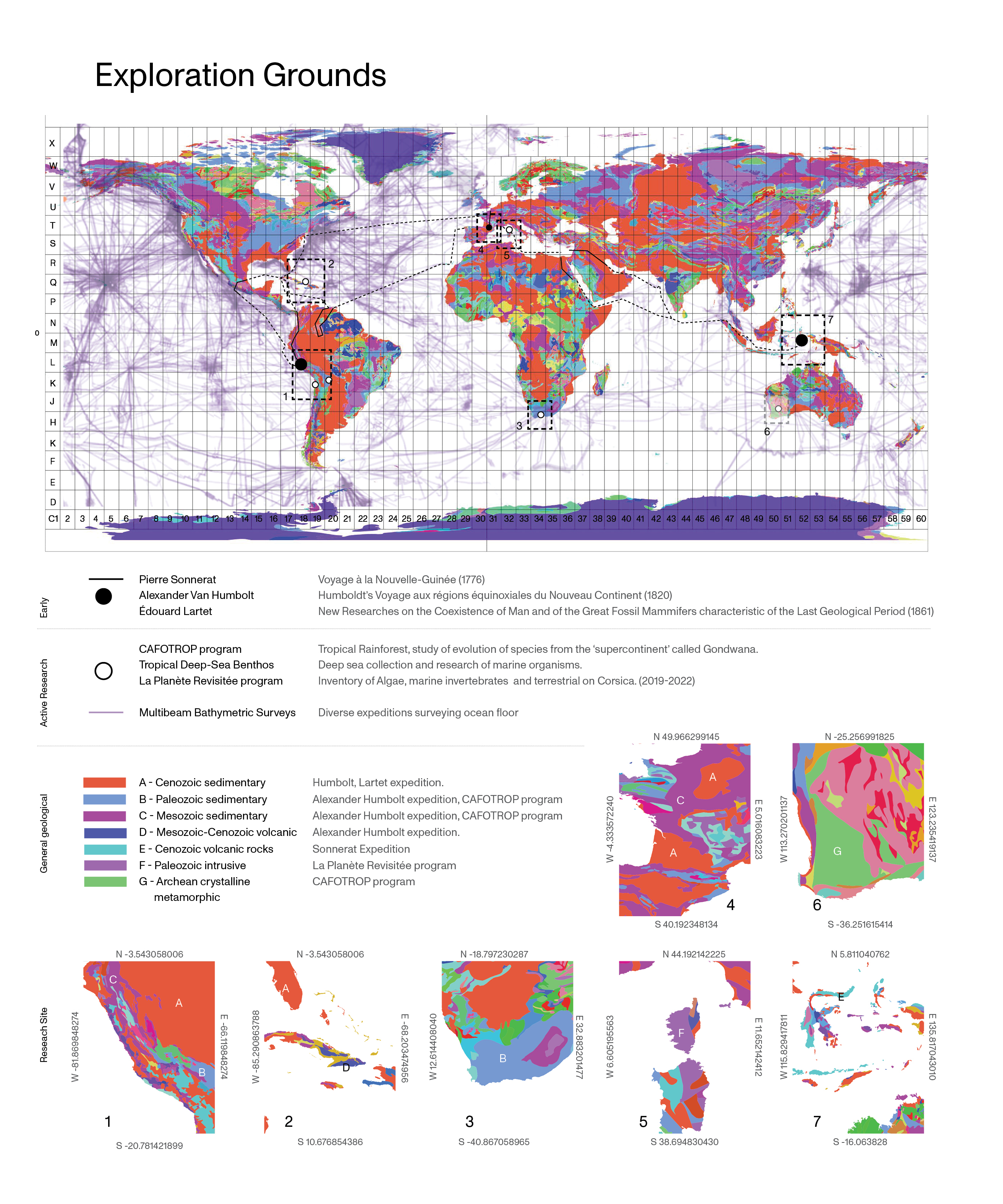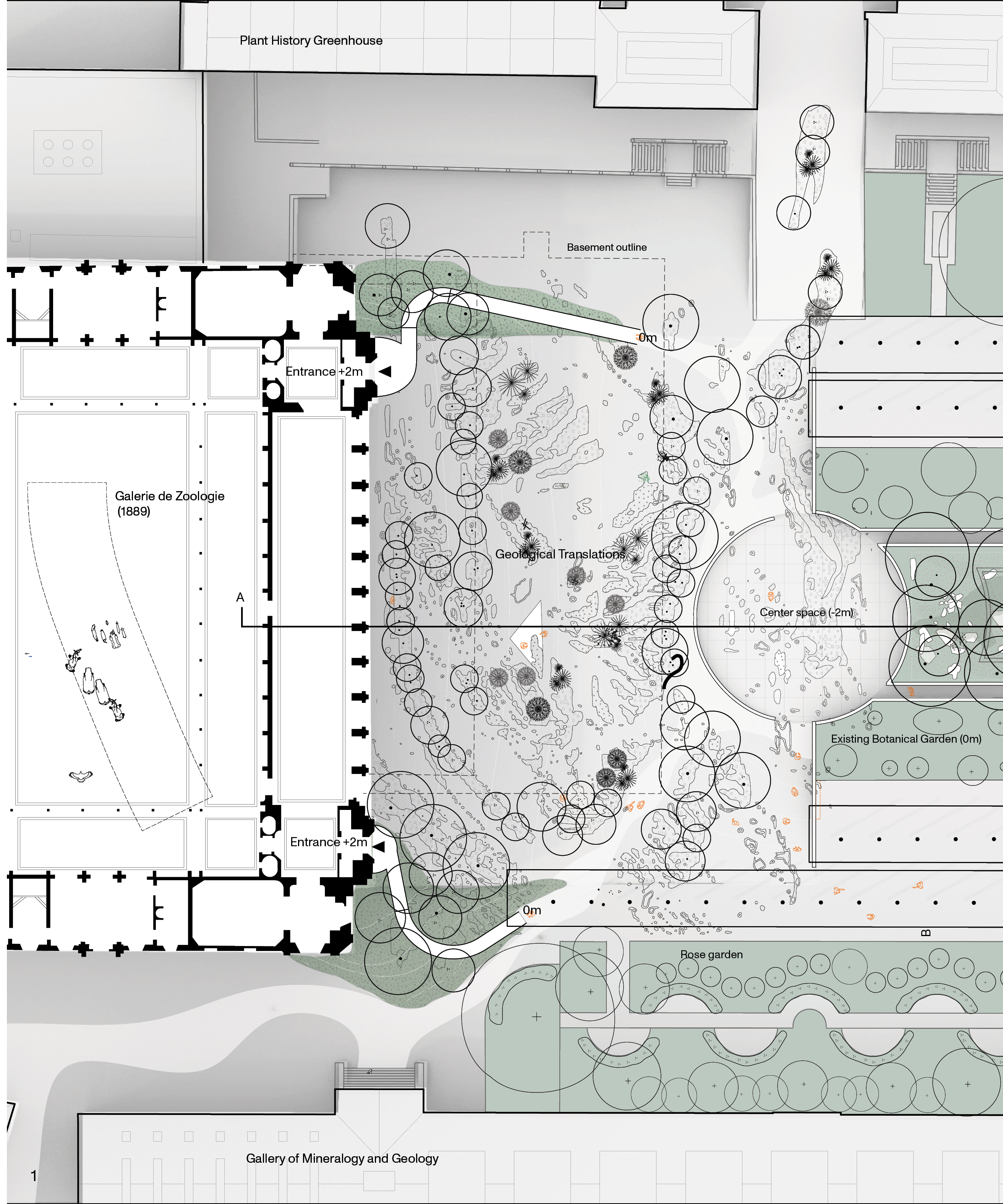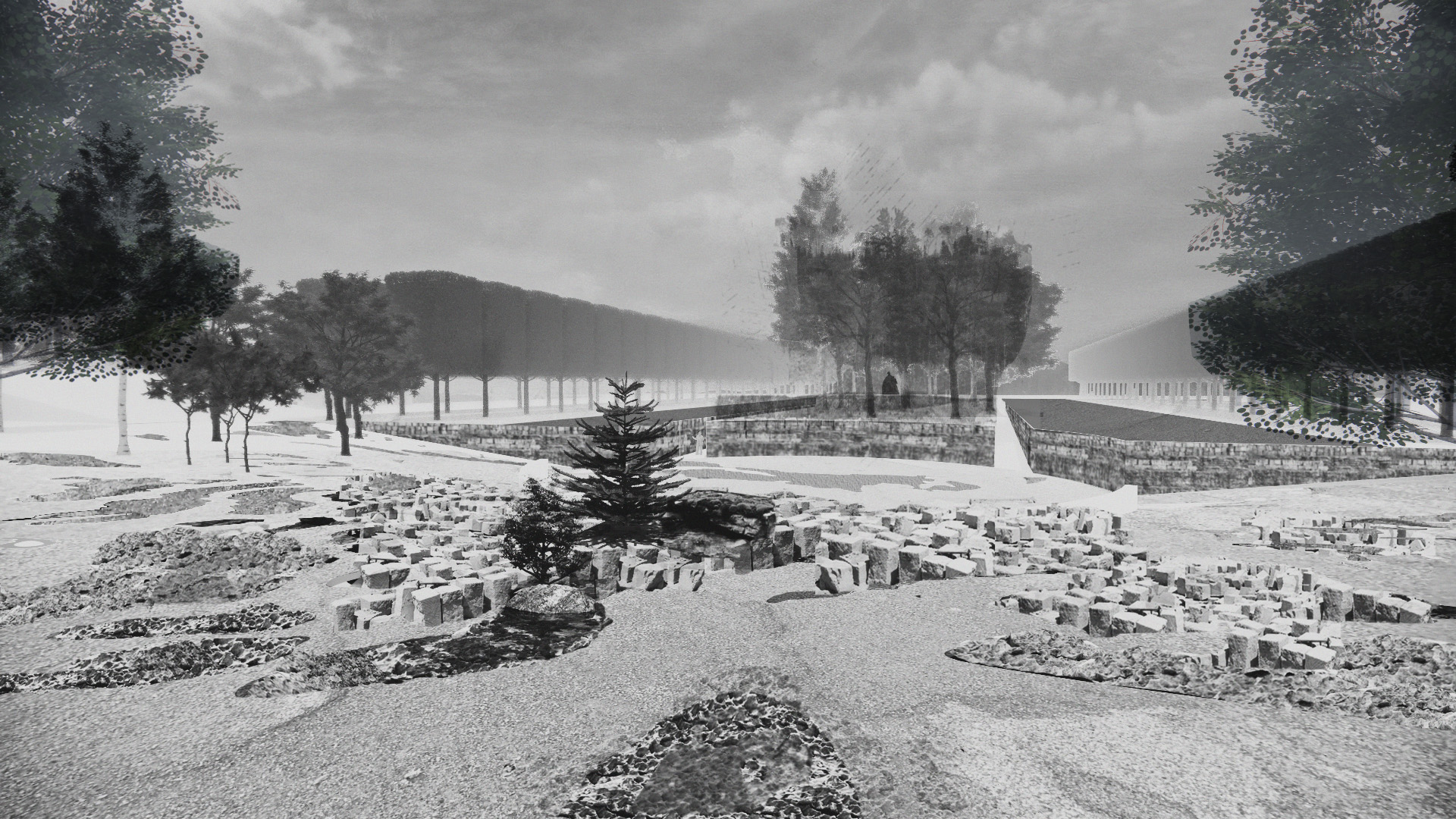The LA+ EXOTIQUE design ideas competition asks entrants to design the forecourt of the Museum of Natural History in Paris. The competition entry was completed with Ryan Coates.
“The collection of living matter archived in the Natural History Museum, in particular in the Gallery of Evolution, Gallery of Mineralogy and Geology, Gallery of Botany, Gallery of Paleontology, and Comparative Anatomy, are representations of distant landscapes.
The Western scientific method of gathering data is inherently extractive. One must take knowledge or samples back to a controlled environment for further analysis, ultimately to draw conclusions, and eventually to store or exhibit the findings. Teams of early colonists, scientists, and naturalists collected both intangible atmospheric data and physical specimens, perhaps most notably the scientific expeditions of Alexander Von Humbolt and Pierre Sonnerat. Both naturalists are considered key scientific explorers who took meticulous written records and physical collections extracting distant geographies into our urban fantasy.
The collections featured in the museums today are extractions of living matter from grounds that are inextricably linked to the evolutionary process. The ground condition is part of the morphology of living matter - our proposal is a homage to the grounds that were left behind. The broad assembly of living matter represents a centralization of remote geological conditions, a weaving together of deep time and distance geographies.
The grounds of foreign research are coupled with the local area's own grounded history of limestone quarries that produced the preeminent architectural stone, known as "Paris Stone". The Underland of Paris is expressed on the surface of the forecourt as fields of limestone at varying stages of erosion - from rocky outcrop to aggregate - the scale, geometry, and smoothness of the rock beds are influenced by the existing botanical collection, as varying conditions will encourage organic deposition and spontaneous seedings grounds.
The terrain of the forecourt is lifted to meet the existing entrance level of the museum and lowered where it meets the botanical garden. The modification to the topography allows for universal access to the museum, and limited access into the existing garden. The inaccessible garden becomes an island, left to evolve on its own terms without maintenance.
Through the collection of distant grounds, the project aims to highlight the tension in the ways we organize living matter and the maintenance practices of a living archive.”
“The collection of living matter archived in the Natural History Museum, in particular in the Gallery of Evolution, Gallery of Mineralogy and Geology, Gallery of Botany, Gallery of Paleontology, and Comparative Anatomy, are representations of distant landscapes.
The Western scientific method of gathering data is inherently extractive. One must take knowledge or samples back to a controlled environment for further analysis, ultimately to draw conclusions, and eventually to store or exhibit the findings. Teams of early colonists, scientists, and naturalists collected both intangible atmospheric data and physical specimens, perhaps most notably the scientific expeditions of Alexander Von Humbolt and Pierre Sonnerat. Both naturalists are considered key scientific explorers who took meticulous written records and physical collections extracting distant geographies into our urban fantasy.
The collections featured in the museums today are extractions of living matter from grounds that are inextricably linked to the evolutionary process. The ground condition is part of the morphology of living matter - our proposal is a homage to the grounds that were left behind. The broad assembly of living matter represents a centralization of remote geological conditions, a weaving together of deep time and distance geographies.
The grounds of foreign research are coupled with the local area's own grounded history of limestone quarries that produced the preeminent architectural stone, known as "Paris Stone". The Underland of Paris is expressed on the surface of the forecourt as fields of limestone at varying stages of erosion - from rocky outcrop to aggregate - the scale, geometry, and smoothness of the rock beds are influenced by the existing botanical collection, as varying conditions will encourage organic deposition and spontaneous seedings grounds.
The terrain of the forecourt is lifted to meet the existing entrance level of the museum and lowered where it meets the botanical garden. The modification to the topography allows for universal access to the museum, and limited access into the existing garden. The inaccessible garden becomes an island, left to evolve on its own terms without maintenance.
Through the collection of distant grounds, the project aims to highlight the tension in the ways we organize living matter and the maintenance practices of a living archive.”



